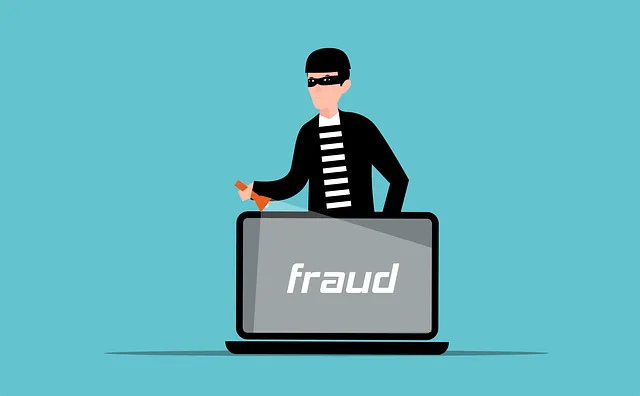What is Cracking, The Most Dangerous Cybercrime
Currently, one type of cybercrime that is considered very dangerous is cracking. Because one of the goals of cracking in general is to lead to criminal acts with a very large impact. Therefore many are asking questions about what is cracking and how to prevent it.
Losses caused by the crime of cracking can cause huge losses both in terms of financial and non-financial. This is what makes cracking a crime that you should be aware of.
As is well known that currently almost all personal data information can be stored on servers, websites, or applications. However, each of these systems certainly has security holes that can be exploited by hackers to steal important data and information in it.
What is Cracking?

Before discussing further about cracking in detail, first you need to know what is cracking. The goal is to get more detailed and complete information about cracking starting from the definition.
The definition of cracking is a technique to break into a computer software and security system with malicious purposes and lead to criminal acts. Cracking is an illegal act that violates the law. The perpetrators of cracking are commonly referred to as crackers.
They hack a computer security system, software, or program by exploiting their programming skills. They can also manipulate the security password of the victim’s device.
Cracking is a type of crime that can attack anyone and at any time. Starting from individuals, corporate businesses, and even attacking the government. Especially if the target of the attack has a relatively weak network security system.
This results in hackers being able to carry out the cracking process more easily and effectively. So that the process of breaking into and stealing data can be done with the aim of personal gain on the hacker.
Cracking Purpose

After reading the explanation of what is cracking, you may also be wondering about the purpose of this activity. In general, each type of cybercrime usually has its own goal orientation.
Read: What is a Proxy Server: Definition, Types, and Benefits
For information, here are some general goals of cracking activities carried out by hackers:
1. Data Theft
One of the main goals of crackers is to steal victim data. When the cracker has found a loophole to enter and break into the computer security system, they will be able to access all kinds of information in it.
Furthermore, the crackers can steal various important data information owned by the victim. If this happens to a company, the data that can be retrieved can include consumer identities to other important reports.
Then the crackers can sell the stolen data on the dark web or other parties, such as company competitors. If this happens, of course it can be very detrimental to cracking victims because it can affect their financial and future conditions.
2. Spreading Malware
Malware is a very common threat to computer or network devices. Devices infected with malware will be subject to many impacts and conditions. For example, decreased performance and could even be damaged.
One of the common purposes of cracking is to spread malware on the hacked network or site. Of course there are many types of malware and viruses that can be injected by crackers according to their goals.
Some of these forms of malware include ransomware where the perpetrator locks all files by asking the relevant party for a ransom, or spyware that allows the perpetrator to know all the activities of the target.
3. Corrupt Data
Another purpose of the cracking process is to destroy the data on the device or server. After the crackers can access the victim’s server or device, the hacker has deeper access to the data owned by the victim.
Read: What is Network Security: Types and Functions
This then allows the crackers to be able to delete the data on the server. Deletion of these data can certainly cause huge losses for the victims.
4. Data Manipulation
In addition to deleting data, crackers can also manipulate data or modify data. Once the crackers are able to steal data, they can manipulate the data for their own benefit.
In addition to selling the data from the cracking, they can also fake it. For example, crackers break into a bank’s computer, they can change the account owner’s data to balance information.
5. Spying on the Company
Besides being able to be used for data theft, cracking can also be used for other purposes. One of them is to do spies on certain targets. One example is spying on companies.
Competition in the business world is a very common thing. Companies that want to win the competition in a dirty way, can use cracking to the company’s advantage.
They can use the services of a cracker to infiltrate and spy on the activities and data of competing companies. If this happens, the cracker can find out various confidential information from the company’s competitors.
Types of Cracking

After reading about what is cracking, you also need to know about the common types of cracking. Based on the technique, cracking can be grouped into three different types, namely:
1. Password Cracking
The first type of cracking you need to know is password cracking. As the name implies, password cracking is the act of a cracker stealing an account or access to a system using a password from stored data.
Passwords on websites or servers will usually be encrypted with a hashing system to make it difficult for crackers to find out. So that crackers will not be able to steal passwords more easily.
For example, if you have a password of “mypassword123” then the hashing system will encrypt the password into a hash of “ujki8dgy100erU” according to the hashing algorithm for each website used.
Read: What is Brute Force Attack – Everything You Need to Know
If you enter the password with the correct hashing, then you will get access to the network, and vice versa. Even though it looks a bit complicated, the cracker is still able to break through that access.
Usually, in this cracking process, crackers will first find out the hashing system and its combination of algorithms by imitating it through a special program on their assembled computer.
In addition, there are various methods commonly used by crackers for this password cracking, such as rainbow table cracking, brute force, dictionary cracking, phishing, and so on. Some of these methods can also be used to simplify the cracking process on the victim’s device or computer network.
2. Software Cracking
The next type of cracking is software cracking. In short, software cracking is an act of hacking software by turning off or changing the features in it. Generally, crackers target paid software so that they can be used for free.
In general, there are three techniques used for this cracking software, namely:
- Patch: changes the original code structure of the software with a number of other lines of code. This is commonly used to turn off pre-use payments, licenses, and the like.
- Keygen: get a serial number to use the software for free using a key generator.
- Loader: to disable the protection and security of a software using certain applications, such as activating cheats in online games or turning off copy protection belonging to paid software.
Using these three techniques, crackers can break into certain software according to their goals.
3. Network Cracking
For internet users, of course, you are already familiar with WiFi and LAN. The third type of cracking is network cracking which targets the network. Network cracking is a hacking of the security systems of these networks.
Read: What is SQL Injection: Definition and How to Solve It
For local networks (LAN) they need to directly connect their devices to the network. Whereas on wireless networks such as WiFi, they only need to be within range of the network signal.
Especially when the network does not have a security system and passwords such as public WiFi, crackers can more easily hack it with just a sniffer.
How to Prevent Cracking

Cracking can threaten anyone who uses computer devices or network systems. Even though you can’t completely eliminate it, you can still reduce the risk of a cracking attack occurring.
For information, here are some ways that can be used to prevent cracking attacks:
1. Use Unique Password for Each Account
One of the cracking efforts is targeting passwords owned by users. Therefore, make sure if you use a unique and difficult to use password for each account. When the cracker manages to hack one of your account passwords, they will not be able to access other accounts.
You can use a password generator to create passwords that are secure and hard to crack. Password manager apps usually offer a password generator and auto-fill passwords for various accounts, so you don’t have to remember all of the passwords.
2. Changing Router Login Information
You need to know that the cracking process can also occur due to the low level of Wifi security. Home wifi users who are less tech-savvy generally won’t change their router login.
This of course will make it easier for the pertas to break into data and information in the network. This means that they can easily enter networks that use the default login information.
3. Use a VPN When Accessing the Internet
The next way that can also be used to prevent cracking attacks is to use a VPN when accessing the internet. Using a VPN is one way to encrypt your network connection. So, you will get an extra layer of protection from crackers who target the device or network you are using.
Read: What is a VPN: A Complete Explanation
In addition, a VPN also serves to protect your personal information from the websites and applications you use. However, you must be careful in choosing the right type of VPN. Make sure to only choose a VPN that is official, credible, and has a high level of security.
4. Upgrade Security System Periodically
The cracking process generally occurs by taking advantage of security holes that exist on certain servers or websites. There is no guarantee that the site you have will be safe forever, because the cracking process also takes time. Therefore, you can work around this by continuing to upgrade the site’s security system regularly.
You can update or upgrade various security systems on your network or website. For example, doing the latest updates to themes, plugins, and so on to ensure that security holes can be optimally covered.
5. Avoid Using Public Wifi Networks
The next tip that can be used to prevent cracking attacks is to avoid using public wifi networks. Especially to carry out important transactions that involve the use of credentials such as banking or others.
Generally, public WiFi is very vulnerable to being hacked by crackers. Therefore, you should avoid using public Wifi networks. If you really have to use public Wifi, you can use a VPN to make it more secure.
Conclusion
Cracking is a type of cyber crime that is quite common and can target anyone. This cracking action is generally used for various purposes such as data destruction, data theft, and so on.
In short, cracking is a technique to break into a computer software and its security system with malicious purposes and lead to criminal acts. This makes cracking a very dangerous act and also harms users.
Although there is no guarantee that you can avoid cracking, there are some tips that you can consider. Starting from accessing secure sites, increasing server and network security, using strong passwords, and also minimizing the use of public wifi.
Some of the steps above can be an option to avoid the threat of dangerous cracking. Especially for those of you who have important and crucial data, such as business owners or companies.
That’s a complete discussion of what is cracking that you need to know. After reading the article, hopefully you can understand more about cracking, its types, and also how to prevent cracking on devices and networks.
